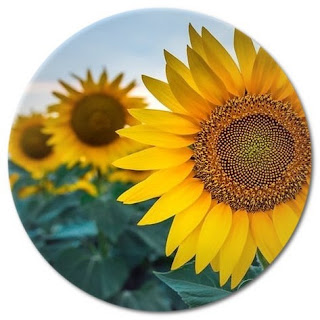Types of Flowers
There are an incredibly vast number of flower species, with estimates ranging from 300,000 to 400,000 different types of flowering plants on Earth. Flowers come in an extensive array of shapes, sizes, colors, and fragrances, making them one of the most diverse groups of plants. To organize this diversity, botanists classify flowers into various types based on shared characteristics. Here are some common types of flowers based on different criteria:
Simple vs. Compound Flowers:
- Simple Flowers: These consist of a single flower with one or more petals. Examples include roses and lilies.
- Compound Flowers: These are clusters of multiple flowers that together create what appears to be a single flower head. Sunflowers and daisies are examples of compound flowers.
Complete vs. Incomplete Flowers:
- Complete Flowers: These have all four main floral parts—sepals, petals, stamens, and pistils. Roses and lilies are examples.
- Incomplete Flowers: These lack one or more of the main floral parts. Grasses and many wind-pollinated flowers fall into this category.
Monocot vs. Dicot Flowers:
- Monocot Flowers: These flowers have petals in multiples of three and veins that run parallel in the leaves. Examples include lilies and orchids.
- Dicot Flowers: These flowers have petals in multiples of four or five and a branching vein pattern in the leaves. Roses and sunflowers are dicots.
Regular vs. Irregular Flowers:
- Regular Flowers: The floral parts are arranged symmetrically, and the flower can be divided into equal halves. Examples include lilies and buttercups.
- Irregular Flowers: The floral parts are not arranged symmetrically, and the flower cannot be divided into equal halves. Orchids and snapdragons are irregular flowers.
Inflorescence Types:
- Racemose Inflorescence: The main axis continues to grow, and flowers are arranged along the sides, e.g., lilacs.
- Cymose Inflorescence: The main axis terminates in a flower, and lateral branches develop, e.g., lilies.
Specialized Flower Types:
- Composite or Asteraceae Family: Flowers consist of tiny florets arranged in a dense head, surrounded by ray florets. Examples include sunflowers and daisies.
- Orchids: Known for their complex and often unique floral structures.
- Cacti Flowers: Often large and showy, blooming from the sides of the plant.
Based on Reproduction:
- Perfect Flowers: Flowers that have both male and female reproductive organs (stamens and pistils).
- Imperfect Flowers: Flowers that lack either stamens or pistils.
This classification is not exhaustive, and the diversity of flowers is further amplified by the numerous genera and species within each type. Each flower type has its own characteristics, adaptations, and ecological roles.
Important flower species grown in pots
Many flower species can be successfully grown in pots or containers, providing a burst of color and beauty to patios, balconies, or small gardens. Here are some popular flower species that are commonly grown in pots:
Petunia (Petunia spp.): Petunias are available in various colors and are well-suited for hanging baskets or containers. They are known for their abundant, trumpet-shaped flowers.
Geranium (Pelargonium spp.): Geraniums are versatile and come in a range of colors. They thrive in pots, making them popular choices for container gardening.
Calibrachoa (Calibrachoa spp.): Also known as Million Bells, Calibrachoa produces small, petunia-like flowers and is well-suited for containers, hanging baskets, or window boxes.
Verbena (Verbena spp.): Verbena is a low-maintenance trailing plant with clusters of small, colorful flowers. It's great for hanging baskets and containers.
Nasturtium (Tropaeolum majus): Nasturtiums are known for their vibrant, edible flowers and round leaves. They do well in containers and add a touch of whimsy to gardens.
Marigold (Tagetes spp.): Marigolds are easy to grow and produce cheerful, daisy-like flowers. They are suitable for pots, borders, or companion planting.
Lantana (Lantana camara): Lantana is a colorful and heat-tolerant plant that produces clusters of small, tubular flowers. It works well in containers and attracts butterflies.
Dianthus (Dianthus spp.): Dianthus, or pinks, are compact plants with fragrant, clove-scented flowers. They are suitable for pots, borders, or rock gardens.
Alyssum (Lobularia maritima): Alyssum is a low-growing plant with tiny, fragrant flowers. It's great for edging containers or as a ground cover.
Begonia (Begonia spp.): Begonias come in various forms, including fibrous-rooted and tuberous types. They are appreciated for their colorful flowers and interesting foliage.
Snapdragon (Antirrhinum majus): Snapdragons are known for their tall spikes of flowers that resemble dragon heads. They add vertical interest to container gardens.
Fuchsia (Fuchsia spp.): Fuchsias are known for their unique, pendulous flowers that come in various colors. They are suitable for hanging baskets and containers.
Salvia (Salvia spp.): Many salvias, such as the popular annual Salvia splendens, are well-suited for containers. They attract pollinators and add vibrant color.
Viola (Viola spp.): Violas, including pansies, are compact plants with charming, colorful flowers. They're great for pots and containers.
Bacopa (Sutera cordata): Bacopa is a trailing plant with small, five-petaled flowers. It's often used in hanging baskets or as a ground cover in containers.
When selecting flowers for pots, consider factors like sunlight requirements, soil preferences, and the size of the container. Proper watering and occasional fertilization will help these plants thrive in a container gardening environme.





Comments
Post a Comment